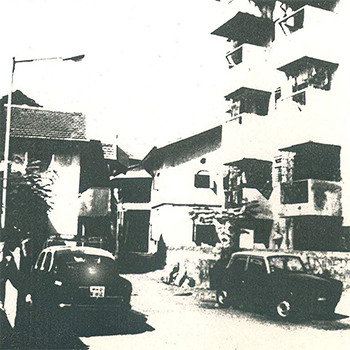"Before the city, there was a hamlet and the shrine and the village: before the village, the camp, the cache, the cave, the caira, and before all these, there was a disposition of social life that man plainly shares with many other animal species." – Lewis Mumford, The City in History
The aim of this study was to study the conflicting coexistence of ethnicity and modernization arising in a city.
From various other aspects denoted by this idea, that of studying the life of a community as a whole; from their arrival to their present status; the development of a lifestyle in its totality, within the fabric of an urban settlement, formed the central concern of my efforts.
The city of Bombay offers many such examples, existing in vernacular pockets throughout the island. The existence of such havens of tradition can only be explained by looking towards the development of Bombay, which has not been like that of any traditional Indian city. Out of these, Girgaum, Mazgaon, Bandra, Bhynder, and Mahim come to mind immediately. In all of these precincts, communities have settled more than 200 years ago, some even 400 years ago, in search of economic stability around or near centres of occupation.
The vernacular pocket of my interest was Mazgaon, where the 250-year-old Matharpacady village exists, inhabited mostly by the East Indian Christian community. My study includes a brief introduction to the city of Bombay, the pocket and its origin, the images of the community-its roots and traditions, the families living in Matharpacady-their present status and growth with time, the changes with time in the traditions and lifestyle of the people in Matharpacady and in prominent land marks as a result of the onslaught of modernization.
